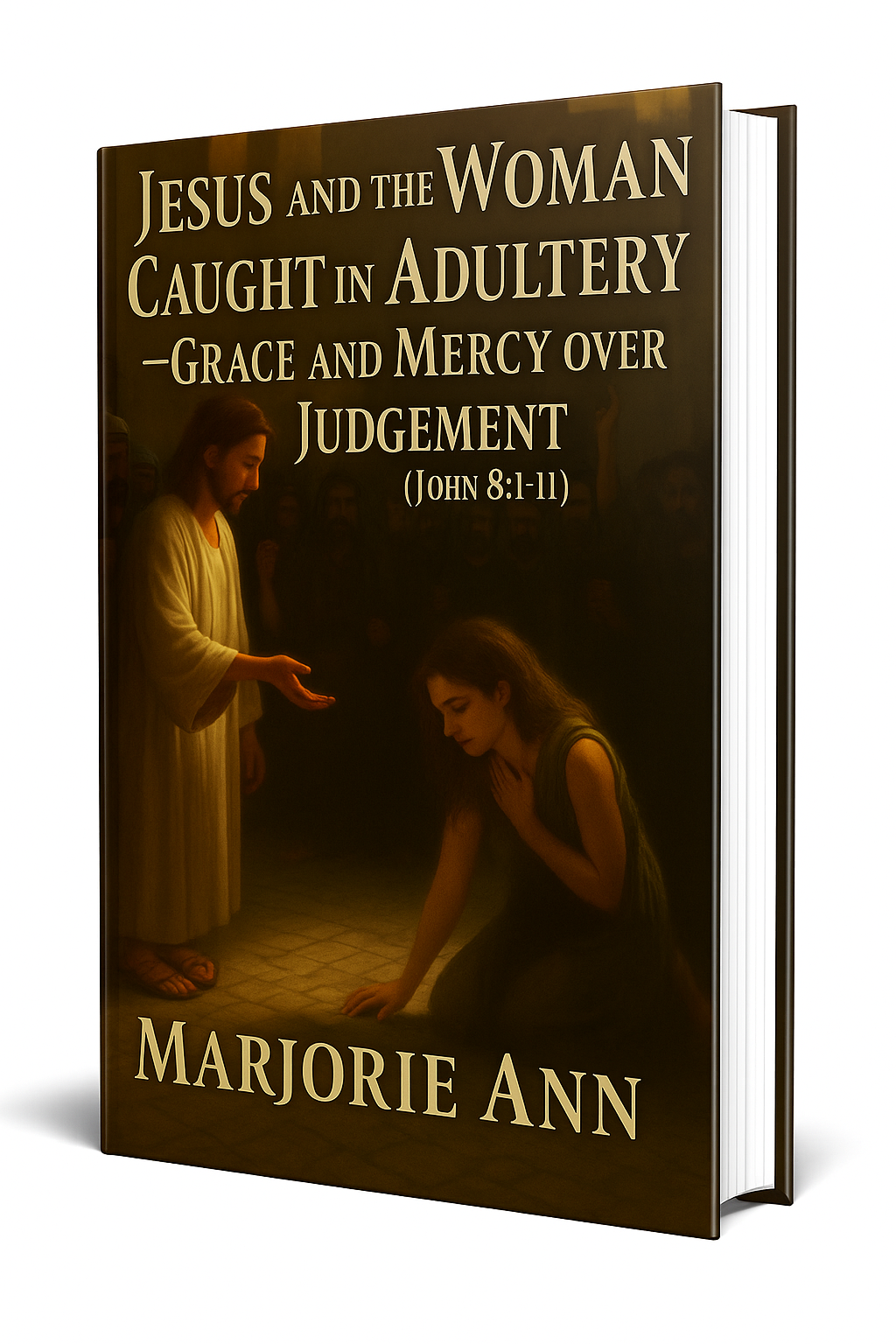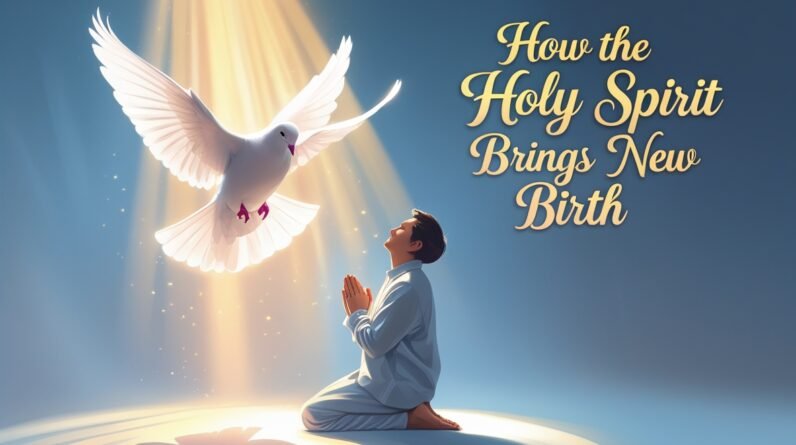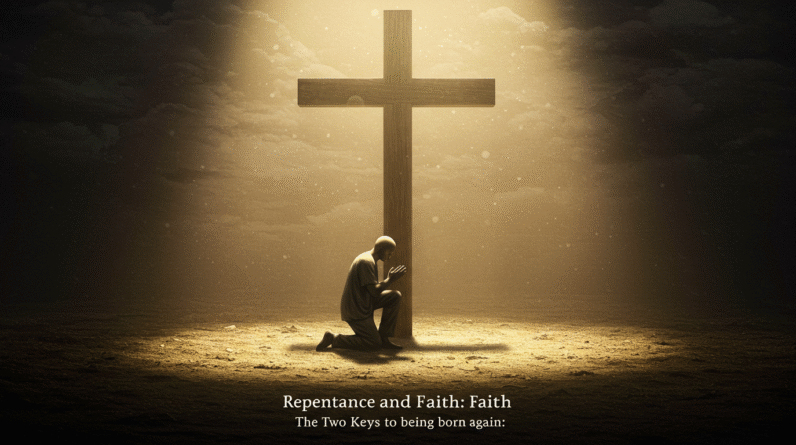How To Be Born Again: Step 4 – Repent And Turn From Sin
You’ve been walking through what it means to be born again. You’ve seen the invitation, the promise, and the beginning of new life. Now you’re on Step 4: repent and turn from sin. This step isn’t a one-time legalistic checklist you must perform to earn God’s favor. It’s a heart-turning, life-changing embrace of the grace God offers you through Jesus. In this article, you’ll find practical encouragement, biblical truth, and spiritual tools to help you genuinely repent and become the person God created you to be.
What Repentance Really Means
Repentance is more than feeling sorry. It’s a deliberate change of mind, heart, and direction—an about-face. When the Bible calls you to repent, it calls you to stop running the show and let God lead. That doesn’t mean you’re judged and tossed aside when you stumble. It means God gently calls you back and gives you the power to change.
The Scriptures put repentance in plain language. Jesus began His ministry proclaiming, “Repent, for the kingdom of heaven has come near” (Matthew 4:17). John the Baptist called people to “repent and be baptized” (Matthew 3:2). The apostles continued to call people to turn from sin and trust in Jesus (Acts 2:38). Repentance is Biblical. It’s practical. It’s life-changing.
Why Repentance Is Not Condemnation
You might worry that repentance is about condemnation—like a spiritual guilt trip that leaves you discouraged. That’s a misunderstanding. Repentance begins with conviction by the Holy Spirit, but it’s designed to bring you to the light of God’s forgiveness and transformation, not to keep you in shame.
The Bible reassures you of God’s forgiving heart: “If we confess our sins, he is faithful and just and will forgive us our sins and purify us from all unrighteousness” (1 John 1:9). That promise doesn’t leave you stuck; it opens the door to healing and change. The point of repentance is restoration, not punishment.
The Heart of Repentance: Turning Toward God
Repentance is turning toward God and away from the patterns that keep you bound. That turning is both a decision and a daily practice. It includes confessing your sin, asking God for forgiveness, and then actively choosing new behaviors aligned with Christ.
You’re not called to perfection in a day. Paul explained that when you put your faith in Christ, you become a new creation: “Therefore, if anyone is in Christ, the new creation has come: The old has gone, the new is here!” (2 Corinthians 5:17). That new life begins now and grows over time by cooperating with the Holy Spirit.
Repentance Is Empowered by God — Not a Burden on You
When you repent, you’re not left to fix yourself. God supplies the power. The same God who raised Jesus from the dead gives you the power to live differently. The apostle Paul ties repentance and new life to the resurrection of Christ: “We were therefore buried with him through baptism into death so that, just as Christ was raised from the dead… we too may live a new life” (Romans 6:4). That resurrection power empowers change.
This is central to understanding how to be born again step 4, resurrection in our salvation. Repentance is the door; God’s resurrection power is what makes transformation possible. You’re not shifting behavior by grit alone—you’re cooperating with the risen Christ who lives in you.
How Repentance Looks Practically: Steps You Can Take
Repentance moves from an inward change to outward action. Here are practical steps to help you turn from sin and live the new life God offers. Each step is simple but requires honesty, prayer, and accountability.
- Recognize and name the sin. Be specific. Vague guilt doesn’t lead to growth; clear naming does.
- Confess to God. Speak honestly to God about your sin and ask for forgiveness (1 John 1:9).
- Turn away in action. Replace the sinful habit with a godly habit. Paul teaches transformed living in Christ (Romans 12:2).
- Seek accountability. Confess to a trusted believer so you can receive prayer and support (James 5:16).
- Rely on the Holy Spirit. Ask the Spirit to fill you and lead you each day (Ephesians 5:18).
Each of these steps helps you move from remorse to real, lasting transformation. Remember: change happens by God’s power and your cooperation.
Common Obstacles to Turning From Sin
You’ll face obstacles as you walk this road. That’s normal. The good news is that knowing the obstacles helps you overcome them. Here are some common barriers and how to deal with them.
- Shame that makes you hide. Shame shuts down repentance. Bring it into the light and remember God’s forgiveness (Psalm 51:10).
- Minimizing your sin. Making excuses keeps you from change. Be honest before God and others (Luke 13:3).
- Fear of failure. You will stumble, but God’s grace covers failures when you confess and move forward (1 John 1:9).
- Lack of accountability. Walking alone makes relapse more likely. Invite others to walk with you (Hebrews 10:24-25).
When obstacles come, don’t give up. Repentance isn’t about never failing; it’s about returning to God when you do.
The Role of Faith and Confession
Repentance and faith are closely tied. Turning from sin involves trusting Jesus to forgive you and to transform your heart. As Paul said, “If you confess with your mouth, ‘Jesus is Lord,’ and believe in your heart that God raised him from the dead, you will be saved” (Romans 10:9). That inner faith produces outward confession and action.
This is why the resurrection is a cornerstone of repentance: your faith is anchored in a living Savior who defeats sin and death. That reality makes genuine change possible. When you confess and believe, you’re stepping into the new life that Jesus offers.
Resurrection in Our Salvation: Why It Matters for Repentance
The resurrection isn’t just a historical fact; it’s the power source for the Christian life. When Jesus rose, He conquered sin and death. That victory is yours when you repent and believe. Paul tied baptism and new life directly to the resurrection: “We were therefore buried with him through baptism into death so that, just as Christ was raised from the dead… we too may live a new life” (Romans 6:4). This truth helps you understand how to be born again step 4’ resurrection in our salvation.
Because of the resurrection, you aren’t left to change by willpower alone. You’re empowered by the same life that raised Jesus from the dead. That means when you repent, God supplies the resources you need to truly turn from sin. The resurrection is not an abstract doctrine—it’s your daily help.

Repentance Leads to Restoration and Relationship
Turning from sin restores your relationship with God and others. Sin breaks fellowship; repentance rebuilds it. The Bible shows that God desires reconciliation and new beginnings: “Come now, let us reason together, says the Lord… though your sins are like scarlet, they shall be as white as snow” (Isaiah 1:18). God’s heart is to restore you.
When you take responsibility, seek forgiveness, and make amends where possible, reconciliation follows. Repentance opens the door for renewed trust and deeper intimacy with God and people.
Practical Spiritual Disciplines That Support Repentance
Repentance is sustained by spiritual practices that keep you close to God. These disciplines aren’t legalism; they’re lifelines.
- Prayer: Talk honestly with God about your struggles and ask for help (Philippians 4:6-7).
- Bible reading: Let Scripture shape your thinking and convict your heart (Psalm 119:105).
- Worship: Praise refocuses your heart on God and away from temptation (Psalm 95:6).
- Fellowship: Share life with other believers for encouragement and accountability (Hebrews 10:24-25).
Consistent practice of these disciplines helps you live the repentance you profess.
The Ongoing Nature of Repentance
Repentance isn’t a one-time event for most believers. It’s a lifestyle of regularly turning back to God. Paul described the Christian life as a continual transformation: “Do not conform to the pattern of this world, but be transformed by the renewing of your mind” (Romans 12:2). You’ll find yourself repenting and recalibrating often—that’s healthy.
This ongoing repentance happens as you daily choose Christ. You’ll make progress over time. The Holy Spirit will guide you into deeper freedom, and your character will reflect Christ more and more.
How Grace and Responsibility Work Together
Grace and responsibility are partners. You don’t repent to earn grace; you repent because grace has found you. God’s kindness leads you to repentance, not to guilt over guilt. Paul said that God’s kindness should lead you to repentance (Romans 2:4). When you respond, you take responsibility for the life God has begun in you.
Remember: grace doesn’t remove the need for action. Repentance is your responsible response to God’s mercy. It’s the thankful, willing cooperation with the Spirit’s work in you.
Examples of Repentance in Scripture
Scripture gives real examples to encourage you. Peter, after denying Jesus, wept and repented, then was restored to ministry (Luke 22:61-62). The prodigal son came to his senses and turned home—his father ran to embrace him (Luke 15:17-20). In Acts, people responded to the gospel by repenting and being baptized, receiving the gift of the Holy Spirit (Acts 2:38).
These stories show you what true repentance looks like—honest sorrow, a turning of direction, and a restored relationship.
When You Slip: Steps To Get Back on Track
You will slip sometimes. That’s part of the journey. The key is what you do next. Here’s a simple recovery plan:
- Confess the sin to God immediately (1 John 1:9).
- Reaffirm your decision to follow Christ and ask the Spirit to help you.
- Remove or reduce the triggers that lead you into sin.
- Seek support from a trusted friend or mentor.
- Learn from the fall and plan practical changes to avoid repetition.
Every stumble can be a step forward if you respond with humility and faith.
The Forgiveness That Frees You
Repentance opens you to God’s forgiveness, and forgiveness frees you to live. You don’t have to carry the weight of guilt forever. The psalmist prayed, “Create in me a pure heart, O God, and renew a steadfast spirit within me” (Psalm 51:10). God promises to wash you clean when you confess and turn.
That freedom isn’t a license to sin. Rather, it’s the power to live in righteousness. Paul put it plainly: “You have died to sin and have been raised to new life” (Romans 6:4). That new life is a gift to receive and steward.
Repentance and the Church Community
You don’t do this alone. The church exists to help you grow in repentance and faith. When you confess and seek help, the church is to support you with prayer, counsel, and practical help (James 5:16). True Christian community gently calls you to holiness and lovingly covers you when you fall.
If you’re not part of a church family, now is a great time to connect. A healthy congregation points you to Jesus, helps you repent, and rejoices in your restoration.
Repentance and Social Justice: Turning from Personal and Structural Sin
Repentance isn’t only personal; it can be social and communal. Scripture calls God’s people to turn from systems that harm others and to pursue justice, love, and mercy (Micah 6:8). When you repent personally, it can lead you to advocate for the oppressed, speak for the voiceless, and correct injustices.
God’s heart is for whole-life repentance—personal holiness that flows into actions that bless your community and world.
How to Teach Others to Repent
You may be in a position to help guide someone else. Teach with gentleness and patience. Start with grace: remind them that God wants to restore, not shame. Lead them through confession, prayer, and practical steps. Encourage accountability and daily spiritual disciplines. Use Scripture to show that repentance is a normal and hopeful part of the Christian life (Acts 3:19).
Helping others repent is a ministry of love and restoration.
Measuring Growth: Signs That Repentance Is Real
How will you know if repentance is genuine? Look for fruit. Jesus said you will recognize a tree by its fruit (Matthew 7:16-20). Signs include changed behavior, humility, a desire for Scripture and prayer, love for others, and perseverance in following Christ.
Growth might be slow, but it’s steady if you cooperate with the Spirit. Celebrate progress and trust God with the rest.

Final Encouragement: Hope for the Journey
Repentance is both simple and profound. It’s simple because it begins with an honest turn to God. It’s profound because that turn taps into resurrection power that changes your life. Don’t be discouraged by struggles. You are not alone. The God who raised Jesus from the dead is the very God who empowers your new life. Embrace His grace, take practical steps, and trust the Holy Spirit to lead you.
Remember the truth that anchors everything: “If anyone is in Christ, the new creation has come” (2 Corinthians 5:17). That’s the basis for how to be born again step 4’ resurrection in our salvation—repentance activated by the risen Savior.
A Short Prayer You Can Use
You can pray something like this when you’re ready to repent: “Lord Jesus, I confess my sin and turn from it. I trust You as my Savior. Thank You for forgiving me and giving me new life. Fill me with Your Spirit so I can live in a way that honors You. In Jesus’ name, amen.” This simple prayer is a doorway to a life transformed by grace.
Conclusion: Take the Next Step Today
If you haven’t yet made that choice, don’t delay. Repent and trust Christ. If you’re already walking with Him, keep choosing fresh repentance and cooperation with the Spirit. The Christian life is a lifelong journey of turning to God and being transformed by His power.
And as you continue to grow, remember the resurrection is at the center of your salvation and daily life—this is how to be born again step 4’ resurrection in our salvation. Let that truth give you courage to change, strength in temptation, and joy in transformation.
If this article helped you, please clap, leave a comment about what God is doing in your life, and subscribe to my Medium newsletter for updates and encouragement. And never forget: God is with you—He forgives, empowers, and transforms. Embrace His grace and keep turning toward Him. How to be born again step 4’ resurrection in our salvation is not just information; it’s your invitation to life. How to be born again step 4’ resurrection in our salvation is the power that makes your repentance real. How to be born again step 4’ resurrection in our salvation calls you to live in that power every day.
Explore More
For further reading and encouragement, check out these posts:
👉 7 Bible Verses About Faith in Hard Times
👉 Job’s Faith: What We Can Learn From His Trials
👉 How To Trust God When Everything Falls Apart
👉 Why God Allows Suffering – A Biblical Perspective
👉 Faith Over Fear: How To Stand Strong In Uncertain Seasons
👉 How To Encourage Someone Struggling With Their Faith
👉 5 Prayers for Strength When You’re Feeling Weak

📘 Jesus and the Woman Caught in Adultery – Grace and Mercy Over Judgement
A powerful retelling of John 8:1-11. This book brings to life the depth of forgiveness, mercy, and God’s unwavering love.
👉 Check it now on Amazon
As a ClickBank Affiliate, I earn from qualifying purchases.
Acknowledgment: All Bible verses referenced in this article were accessed via Bible Gateway (or Bible Hub).
“Want to explore more? Check out our latest post on Why Jesus? and discover the life-changing truth of the Gospel!”








